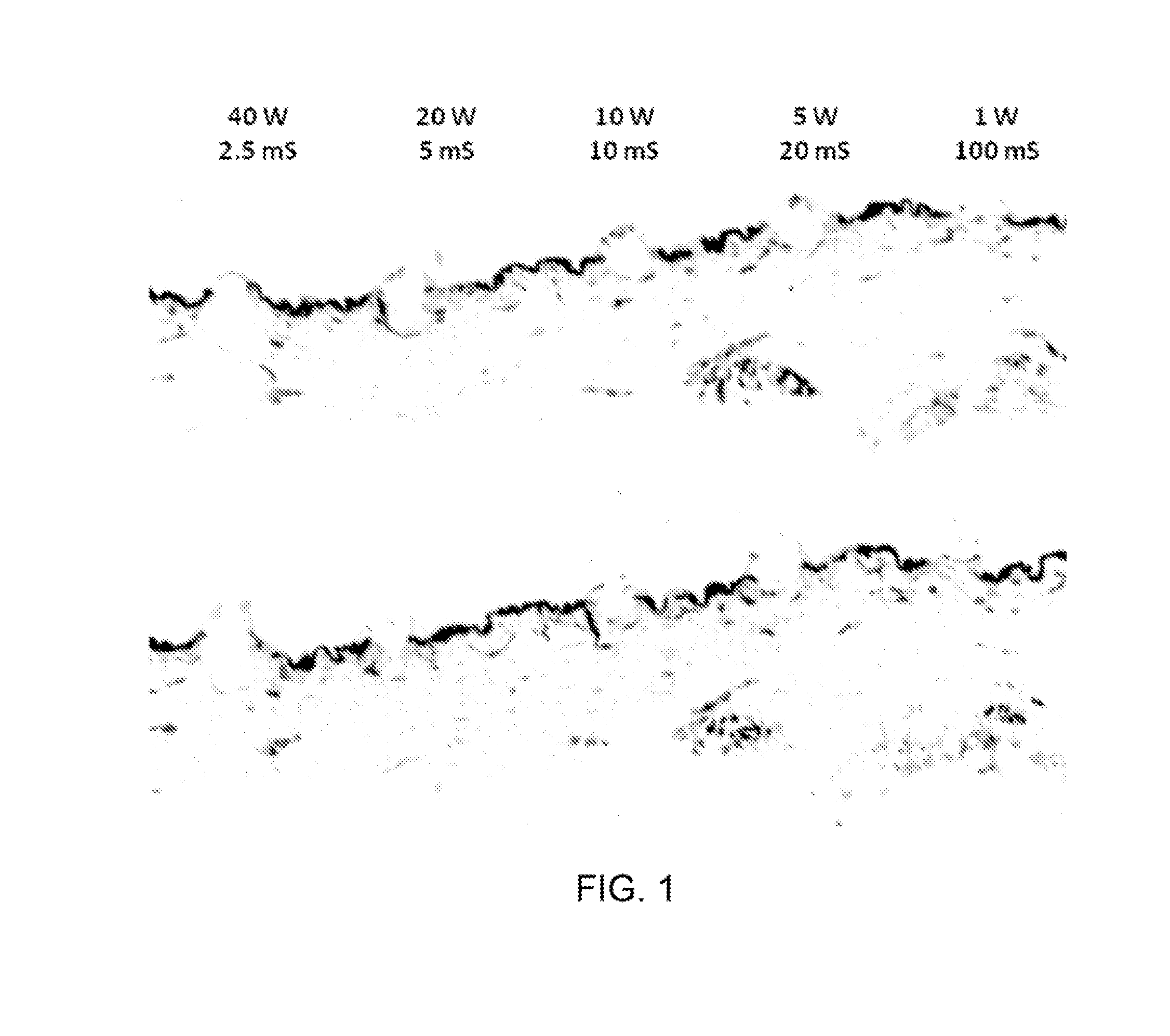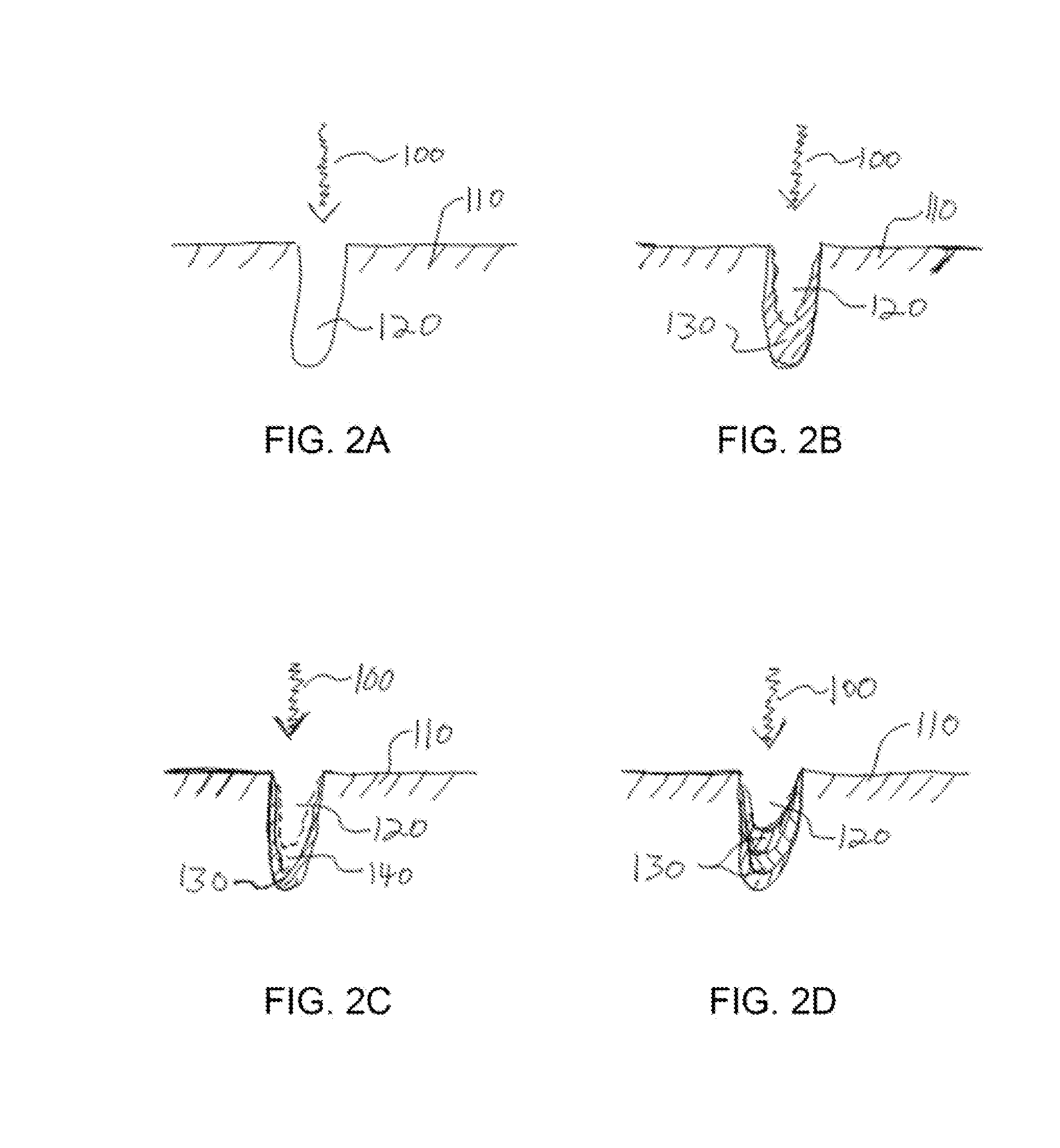Method and apparatus for dermatological treatment
a dermatological treatment and apparatus technology, applied in the field of cosmetic methods and, can solve the problems of increased skin tightness, more rejuvenation, and longer healing time, so as to reduce healing or recovery time, facilitate healing, and reduce healing time
- Summary
- Abstract
- Description
- Claims
- Application Information
AI Technical Summary
Benefits of technology
Problems solved by technology
Method used
Image
Examples
example 1
[0063]Two cross-sectional images of a histological sample showing the effects of two exemplary laser pulse sequences on ex vivo skin tissue are shown in FIG. 4. The skin sample was irradiated with pulses generated by a CO2 laser. The holes shown in FIG. 3 were generated by sequences of three pulses having the powers and durations indicated below the cross-sectional images. For example, the two rightmost holes shown in FIG. 3 were formed by first directing an HA pulse onto the tissue (40 W, 2 ms duration), followed by an MA pulse (5 W, 2 ms duration), and finally an NA pulse (1 W, 10 ms duration) onto the same location. The time interval between pulses was about 10 seconds, although much shorter pulse intervals can be used.
[0064]Similarly, the two leftmost holes shown in FIG. 4 were generated by the pulse sequence denoted below these holes. First, an NA pulse with a power of 1 W and duration of 10 ms was directed onto the tissue. Next, an MA pulse having 5 W power and 2 ms duration w...
example 2
[0067]A Lumenis UltraPulse system with AcuScan120 handpiece (Lumenis Surgical) that includes a controllable CO2 laser was modified with a controller arrangement. The controller arrangement facilitated programming and control of particular pulse sequences in accordance with exemplary embodiments of the present disclosure. 10 sequences of energy pulses (A2-J2) were directed into different locations on a 2 cm×2 cm sample of previously-frozen human abdominal skin.
[0068]The first three sequences (A2-C2) included only ablative 60 W pulses, with a total energy of 100 mJ per sequence. Pulse energies and durations for these ablative sequences are specified in Table 1 below. The exemplary system was programmed in accordance with embodiments of the present disclosure to irradiate the tissue with five further sequences of pulses (D2-H2), with a different location being irradiated by each pulse sequence. Pulse energies and durations for these five sequences, which include a mix of 60 W pulses th...
PUM
 Login to View More
Login to View More Abstract
Description
Claims
Application Information
 Login to View More
Login to View More - R&D
- Intellectual Property
- Life Sciences
- Materials
- Tech Scout
- Unparalleled Data Quality
- Higher Quality Content
- 60% Fewer Hallucinations
Browse by: Latest US Patents, China's latest patents, Technical Efficacy Thesaurus, Application Domain, Technology Topic, Popular Technical Reports.
© 2025 PatSnap. All rights reserved.Legal|Privacy policy|Modern Slavery Act Transparency Statement|Sitemap|About US| Contact US: help@patsnap.com



